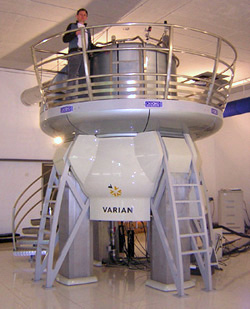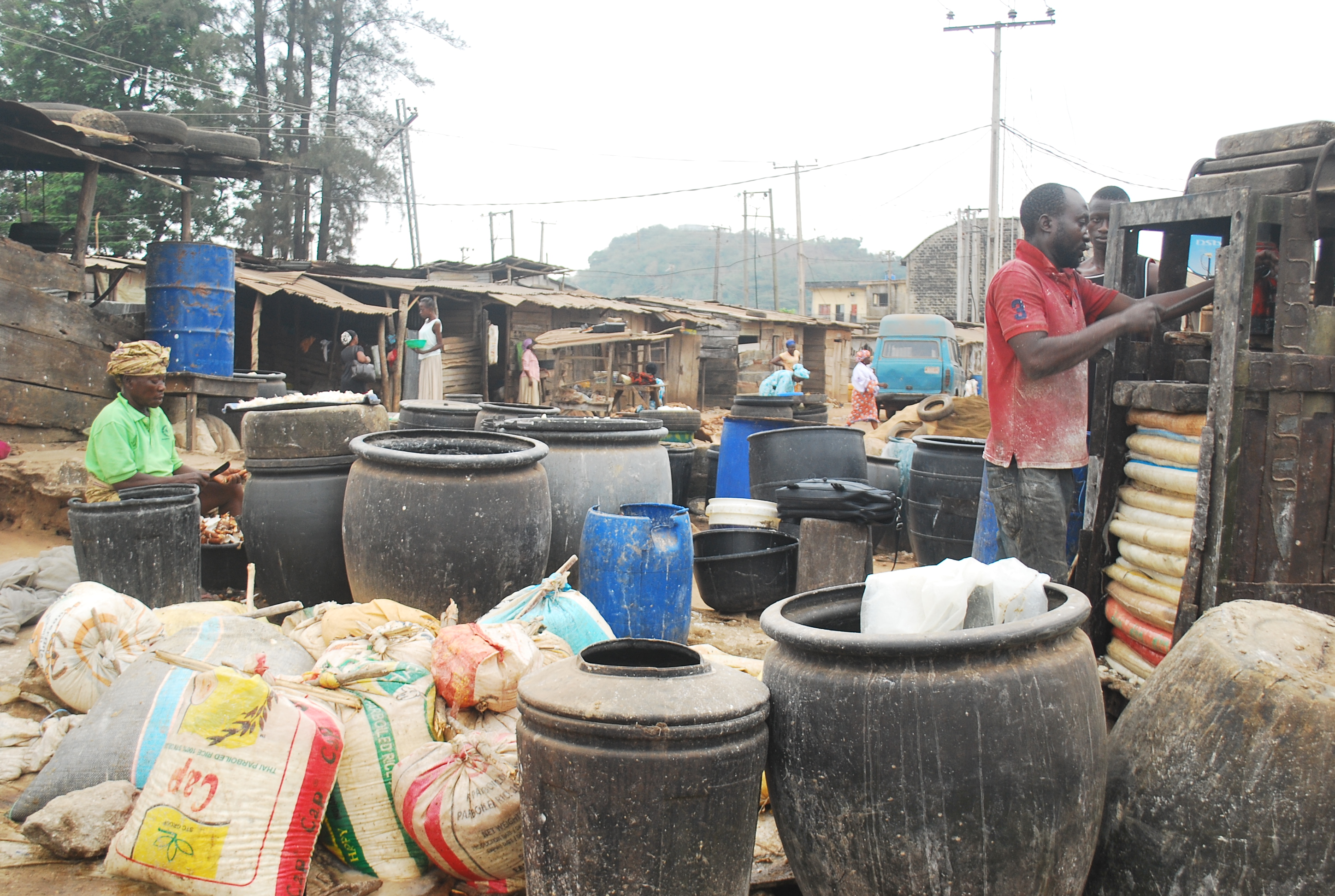|
Palladium(II) Cyanide
Palladium(II) dicyanide is the inorganic compound with the formula Pd(CN)2. A grey solid, it is a coordination polymer. It was the first palladium compound isolated in pure form. In his attempts to produce pure platinum metal in 1804, W. H. Wollaston added mercuric cyanide to a solution prepared by dissolving impure platinum in aqua regia. This precipitated palladium cyanide which was then ignited to recover palladium metal—a new element. Structure It had long been suspected that the structure of palladium cyanide consists of square planar Pd(II) centers linked by cyanide bridging ligands, which are bonded through both the carbon and nitrogen atoms. The CN vibration in the infrared spectra of Pd(CN)2, at 2222 cm−1, is typical of bridging cyanide ion. It is now known that the compound commonly known as "palladium(II) cyanide" is in fact a nanocrystaline material better described using the formula Pd(CN)2.0.29H2O. The interior of the sheets do indeed consist of square-p ... [...More Info...] [...Related Items...] OR: [Wikipedia] [Google] [Baidu] |
Coordination Polymer
Coordination may refer to: * Coordination (linguistics), a compound grammatical construction * Coordination complex, consisting of a central atom or ion and a surrounding array of bound molecules or ions ** A chemical reaction to form a coordination complex * Coordination number or ligancy of a central atom in a molecule or crystal is the number of atoms, molecules or ions bonded to it * Language coordination, the tendency of people to mimic the language of others * Coordination (political culture), a Utopian form of political regime * Motor coordination In physiology, motor coordination is the orchestrated movement of multiple body parts as required to accomplish intended actions, like walking. This coordination is achieved by adjusting kinematic and kinetic parameters associated with each bo ..., in animal motion * '' Gleichschaltung'' the process of Nazification in Germany after 1933, often translated as "coordination" See also * Coordinate (other) * Coordin ... [...More Info...] [...Related Items...] OR: [Wikipedia] [Google] [Baidu] |
NMR Spectroscopy
Nuclear magnetic resonance spectroscopy, most commonly known as NMR spectroscopy or magnetic resonance spectroscopy (MRS), is a spectroscopic technique based on re-orientation of atomic nuclei with non-zero nuclear spins in an external magnetic field. This re-orientation occurs with absorption of electromagnetic radiation in the radio frequency region from roughly 4 to 900 MHz, which depends on the isotopic nature of the nucleus and increases proportionally to the strength of the external magnetic field. Notably, the resonance frequency of each NMR-active nucleus depends on its chemical environment. As a result, NMR spectra provide information about individual functional groups present in the sample, as well as about connections between nearby nuclei in the same molecule. As the NMR spectra are unique or highly characteristic to individual compounds and functional groups, NMR spectroscopy is one of the most important methods to identify molecular structures, particularly of ... [...More Info...] [...Related Items...] OR: [Wikipedia] [Google] [Baidu] |
Cyanides
In chemistry, cyanide () is an inorganic chemical compound that contains a functional group. This group, known as the cyano group, consists of a carbon atom triple-bonded to a nitrogen atom. Ionic cyanides contain the cyanide anion . This anion is extremely poisonous. Soluble cyanide salts such as sodium cyanide (NaCN), potassium cyanide (KCN) and tetraethylammonium cyanide () are highly toxic. Covalent cyanides contain the group, and are usually called nitriles if the group is linked by a single covalent bond to carbon atom. For example, in acetonitrile , the cyanide group is bonded to methyl . In tetracyanomethane , four cyano groups are bonded to carbon. Although nitriles generally do not release cyanide ions, the cyanohydrins do and are thus toxic. The cyano group may be covalently bonded to atoms different than carbon, e.g., in cyanogen azide , phosphorus tricyanide and trimethylsilyl cyanide . Hydrogen cyanide, or , is a highly volatile toxic liquid that is produ ... [...More Info...] [...Related Items...] OR: [Wikipedia] [Google] [Baidu] |
Palladium Compounds
Palladium forms a variety of ionic, coordination, and organopalladium compounds, typically with oxidation state Pd0 or Pd2+. Palladium(III) compounds have also been reported. Palladium compounds are frequently used as catalysts in cross-coupling reactions such as the Sonogashira coupling and Suzuki reaction. Ionic compounds Most ionic compounds of palladium involve the Pd2+ oxidation state. Palladium(II) chloride is a starting point in the synthesis of other palladium compounds and complexes. Palladium(II) acetate plus triphenylphosphine is used as a catalyst in organic synthesis. Coordination compounds Coordination compounds of palladium contain ligands coordinated to a central Pd0 or Pd2+ center. They are typically synthesized by adding ligands to an ionic palladium compound. For example, acetonitrile, benzonitrile, or triphenylphosphine may be coordinated to palladium(II) chloride () to form bis(acetonitrile)palladium dichloride (), bis(benzonitrile)palladium dichlori ... [...More Info...] [...Related Items...] OR: [Wikipedia] [Google] [Baidu] |
Nickel Dicyanide
Nickel(II) cyanide is the inorganic compound with a chemical formula Ni(CN)2. The trihydrate is a gray-green solid that is insoluble in most solvents including water, while the anhydrous form is a yellow solid. Production Addition of two equivalents of sodium or potassium cyanide to a solution of nickel(II) ions in aqueous solution leads to the precipitation of nickel(II) cyanide trihydrate. On heating the trihydrate to 140 °C, this hydrate converts to anhydrous nickel(II) cyanide. Chemical properties Nickel(II) cyanide dissolves in potassium cyanide solution to produce a yellowish solution containing potassium tetracyanonickelate: : Ni(CN)2 + 2 KCN → K2 i(CN)4Nickel(II) cyanide will react with dimethylglyoxime (dmgH2) and produce hydrogen cyanide Hydrogen cyanide (formerly known as prussic acid) is a chemical compound with the chemical formula, formula HCN and structural formula . It is a highly toxic and flammable liquid that boiling, boils slightly above room temperat ... [...More Info...] [...Related Items...] OR: [Wikipedia] [Google] [Baidu] |
Oxiranes
In organic chemistry, an epoxide is a cyclic ether, where the ether forms a three-atom ring: two atoms of carbon and one atom of oxygen. This triangular structure has substantial ring strain, making epoxides highly reactive, more so than other ethers. They are produced on a large scale for many applications. In general, low molecular weight epoxides are colourless and nonpolar, and often volatile. Nomenclature A compound containing the epoxide functional group can be called an epoxy, epoxide, oxirane, and ethoxyline. Simple epoxides are often referred to as oxides. Thus, the epoxide of ethylene (C2H4) is ethylene oxide (C2H4O). Many compounds have trivial names; for instance, ethylene oxide is called "oxirane". Some names emphasize the presence of the epoxide functional group, as in the compound ''1,2-epoxyheptane'', which can also be called ''1,2-heptene oxide''. A polymer formed from epoxide precursors is called an ''epoxy''. However, few if any of the epoxy groups in th ... [...More Info...] [...Related Items...] OR: [Wikipedia] [Google] [Baidu] |
Arrhenius Equation
In physical chemistry, the Arrhenius equation is a formula for the temperature dependence of reaction rates. The equation was proposed by Svante Arrhenius in 1889, based on the work of Dutch chemist Jacobus Henricus van 't Hoff who had noted in 1884 that the Van 't Hoff equation for the temperature dependence of equilibrium constants suggests such a formula for the rates of both forward and reverse reactions. This equation has a vast and important application in determining the rate of chemical reactions and for calculation of Activation energy, energy of activation. Arrhenius provided a physical justification and interpretation for the formula.Keith J. Laidler, Laidler, K. J. (1987) ''Chemical Kinetics'', Third Edition, Harper & Row, p. 42 Currently, it is best seen as an empirical relationship.Kenneth Connors, Chemical Kinetics, 1990, VCH Publishers It can be used to model the temperature variation of Mass diffusivity, diffusion coefficients, population of Vacancy defect, crystal ... [...More Info...] [...Related Items...] OR: [Wikipedia] [Google] [Baidu] |
Associative Pathway
Associative substitution describes a pathway by which compounds interchange ligands. The terminology is typically applied to organometallic and coordination complexes, but resembles the Sn2 mechanism in organic chemistry. The opposite pathway is dissociative substitution, being analogous to the Sn1 pathway. Intermediate pathways exist between the pure associative and pure dissociative pathways, these are called interchange mechanisms. Associative pathways are characterized by binding of the attacking nucleophile to give a discrete, detectable intermediate followed by loss of another ligand. Complexes that undergo associative substitution are either coordinatively unsaturated or contain a ligand that can change its bonding to the metal, e.g. change in hapticity or bending of a nitrogen oxide ligand (NO). In homogeneous catalysis, the associative pathway is desirable because the binding event, and hence the selectivity of the reaction, depends not only on the nature of the met ... [...More Info...] [...Related Items...] OR: [Wikipedia] [Google] [Baidu] |
Reaction Rate
The reaction rate or rate of reaction is the speed at which a chemical reaction takes place, defined as proportional to the increase in the concentration of a product per unit time and to the decrease in the concentration of a reactant per unit time. Reaction rates can vary dramatically. For example, the oxidative rusting of iron under Earth's atmosphere is a slow reaction that can take many years, but the combustion of cellulose in a fire is a reaction that takes place in fractions of a second. For most reactions, the rate decreases as the reaction proceeds. A reaction's rate can be determined by measuring the changes in concentration over time. Chemical kinetics is the part of physical chemistry that concerns how rates of chemical reactions are measured and predicted, and how reaction-rate data can be used to deduce probable reaction mechanisms. The concepts of chemical kinetics are applied in many disciplines, such as chemical engineering, enzymology and environmental e ... [...More Info...] [...Related Items...] OR: [Wikipedia] [Google] [Baidu] |
Labile
Lability refers to the degree that something is likely to undergo change. It is the opposite ( antonym) of stability. Biochemistry In reference to biochemistry, this is an important concept as far as kinetics is concerned in metalloproteins. This can allow for the rapid synthesis and degradation of substrates in biological systems. Biology Cells Labile cells refer to cells that constantly divide by entering and remaining in the cell cycle. These are contrasted with "stable cells" and "permanent cells". An important example of this is in the epithelium of the cornea, where cells divide at the basal level and move upwards, and the topmost cells die and fall off. Proteins In medicine, the term "labile" means susceptible to alteration or destruction. For example, a heat-labile protein is one that can be changed or destroyed at high temperatures. The opposite of labile in this context is "stable". Soils Compounds or materials that are easily transformed (often by ... [...More Info...] [...Related Items...] OR: [Wikipedia] [Google] [Baidu] |
Gold Cyanidation
Gold cyanidation (also known as the cyanide process or the MacArthur–Forrest process) is a hydrometallurgical technique for extracting gold from low-grade ore through conversion to a water-soluble coordination complex. It is the most commonly used leaching process for gold extraction. Cyanidation is also widely used in silver extraction, usually after froth flotation. Production of reagents for mineral processing to recover gold represents 70% of cyanide consumption globally. While other metals, such as copper, zinc, and silver, are also recovered using cyanide, gold remains the primary driver of this technology. The highly toxic nature of cyanide has led to controversy regarding its use in gold mining, with it being banned in some parts of the world. However, when used with appropriate safety measures, cyanide can be safely employed in gold extraction processes. One critical factor in its safe use is maintaining an alkaline pH level above 10.5, which is typically controlle ... [...More Info...] [...Related Items...] OR: [Wikipedia] [Google] [Baidu] |
Palladium
Palladium is a chemical element; it has symbol Pd and atomic number 46. It is a rare and lustrous silvery-white metal discovered in 1802 by the English chemist William Hyde Wollaston. He named it after the asteroid Pallas (formally 2 Pallas), which was itself named after the epithet of the Greek goddess Athena, acquired by her when she slew Pallas. Palladium, platinum, rhodium, ruthenium, iridium and osmium form together a group of elements referred to as the platinum group metals (PGMs). They have similar chemical properties, but palladium has the lowest melting point and is the least dense of them. More than half the supply of palladium and its congener platinum is used in catalytic converters, which convert as much as 90% of the harmful gases in automobile exhaust (hydrocarbons, carbon monoxide, and nitrogen dioxide) into nontoxic substances (nitrogen, carbon dioxide and water vapor). Palladium is also used in electronics, dentistry, medicine, hydrogen purification ... [...More Info...] [...Related Items...] OR: [Wikipedia] [Google] [Baidu] |







